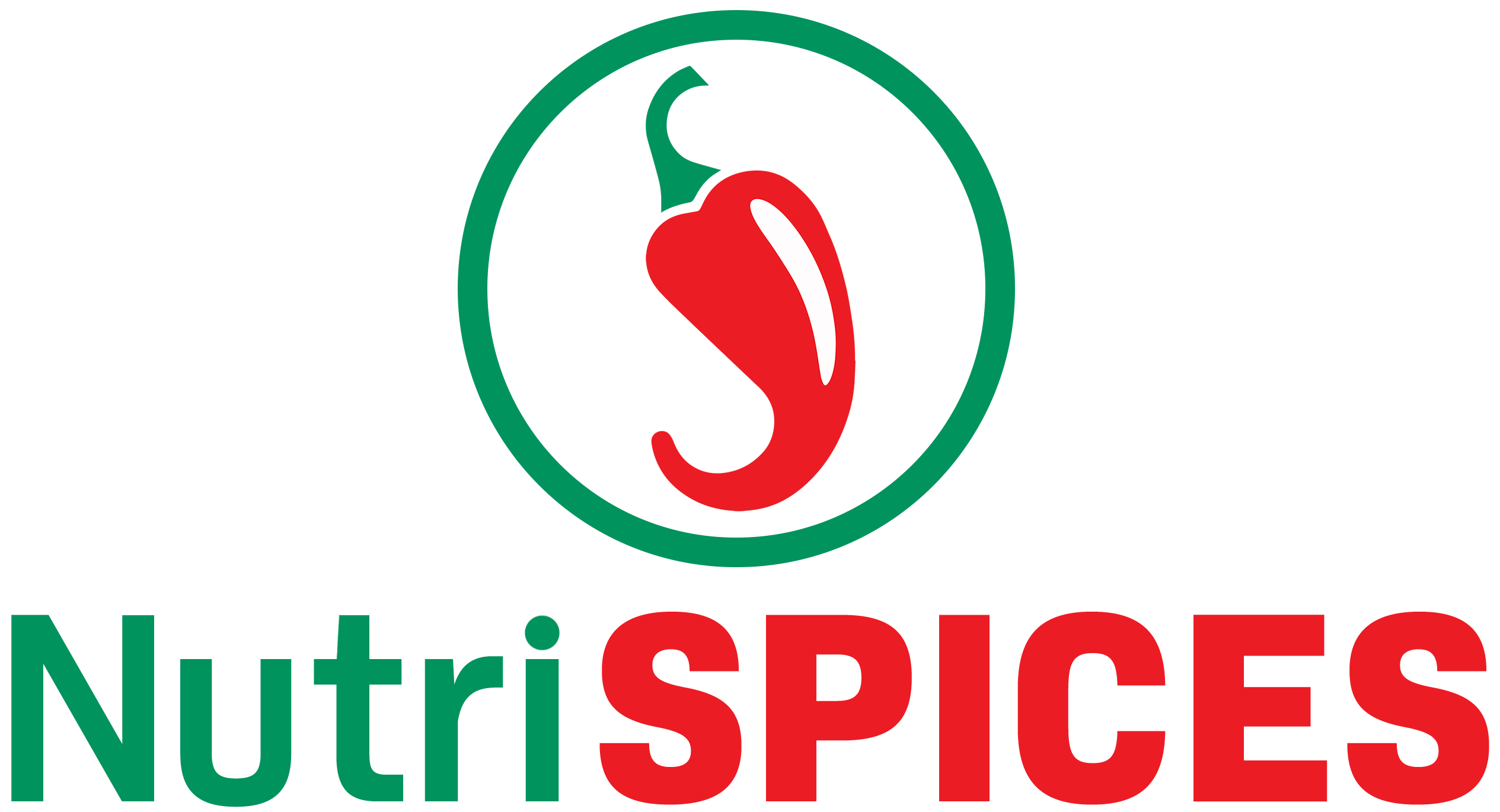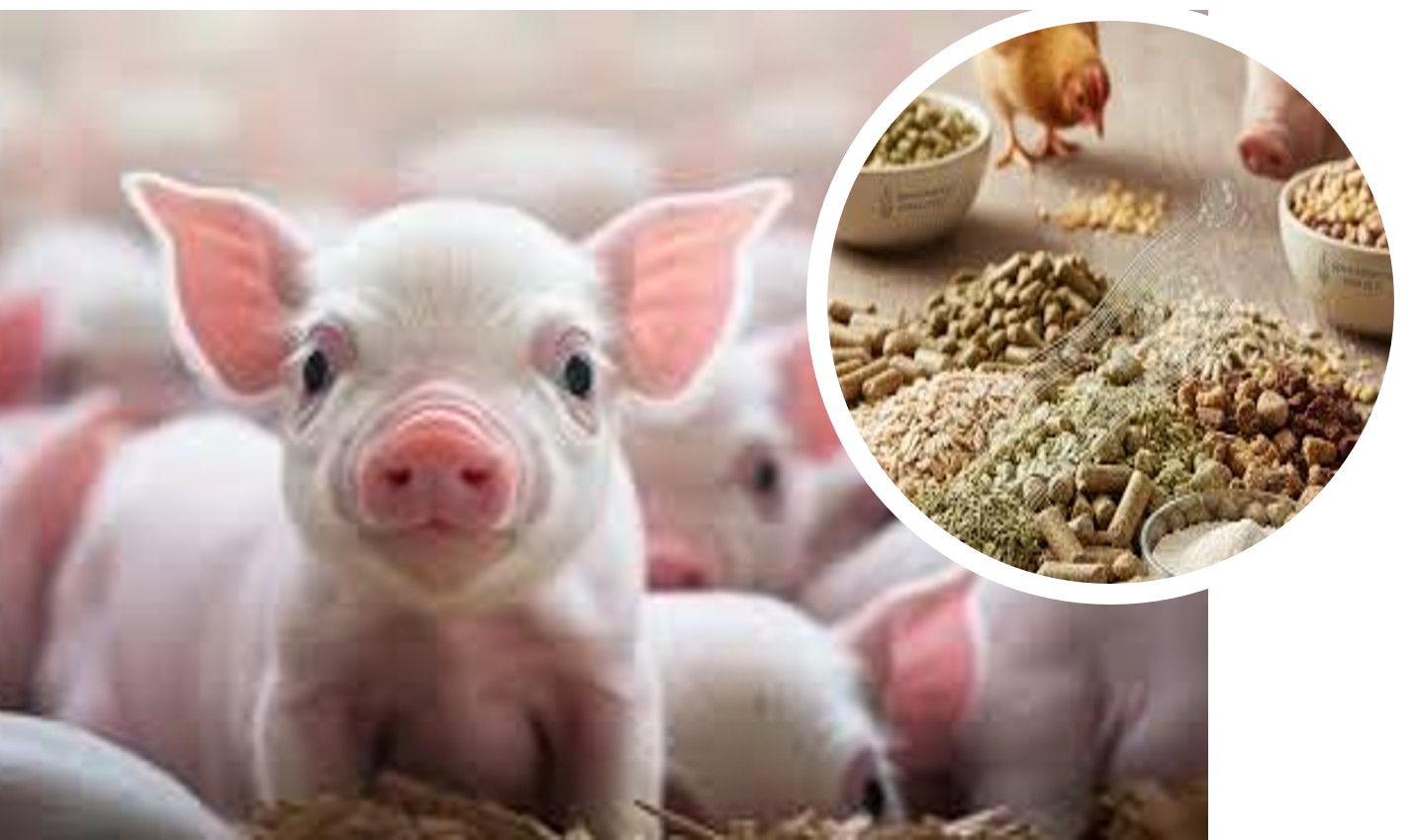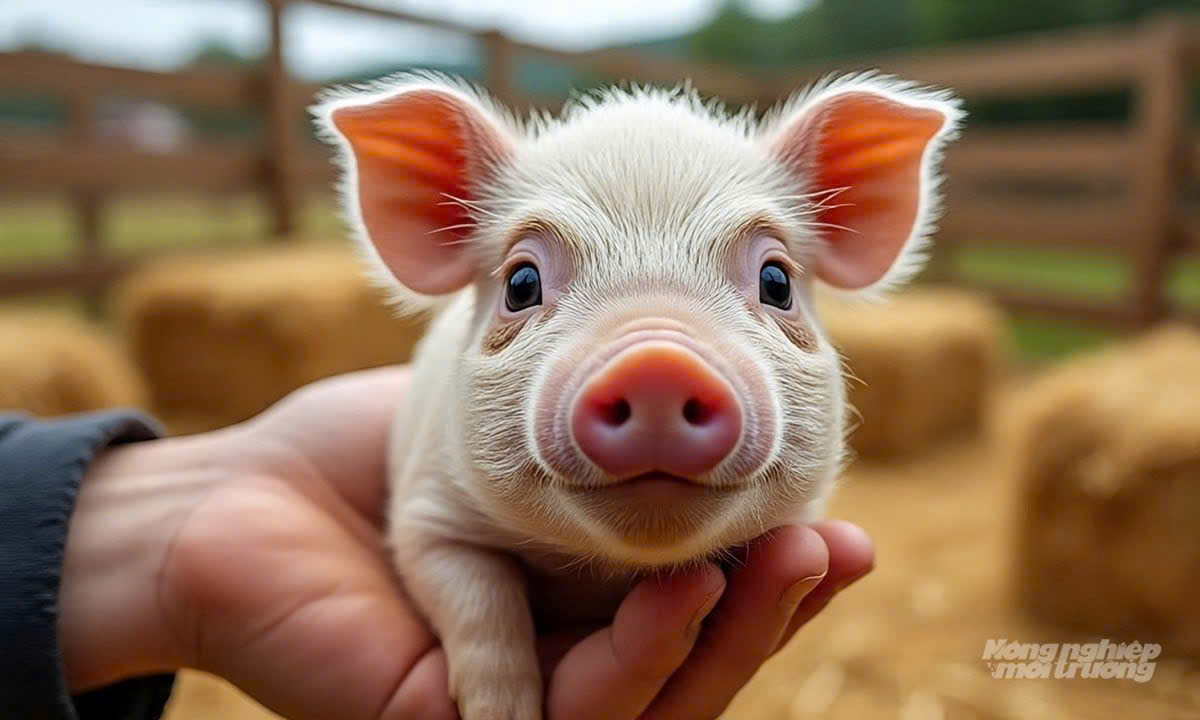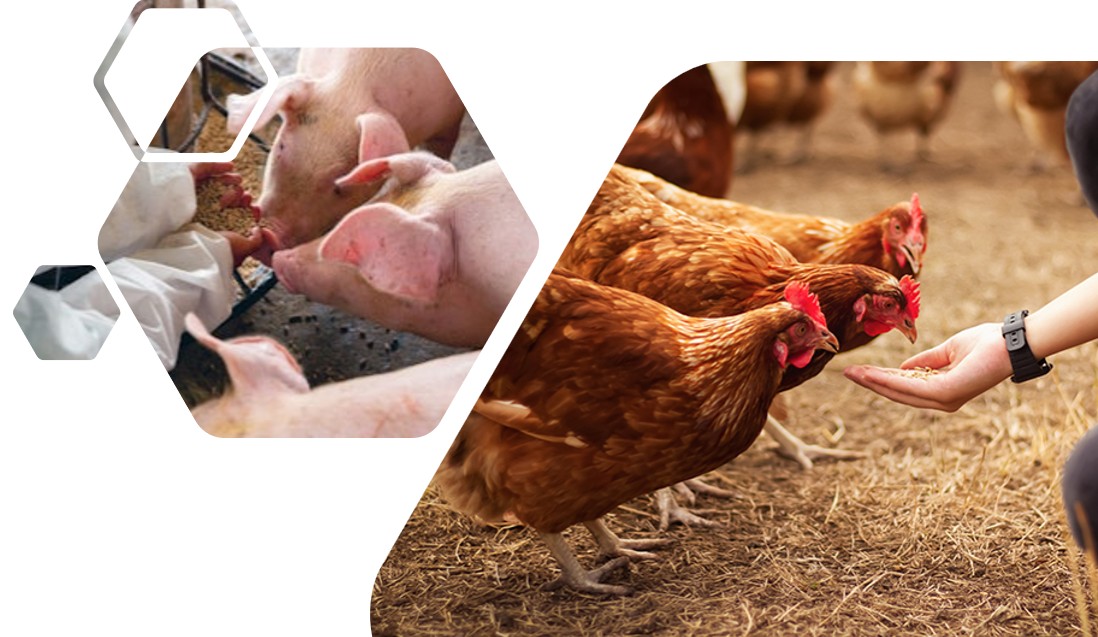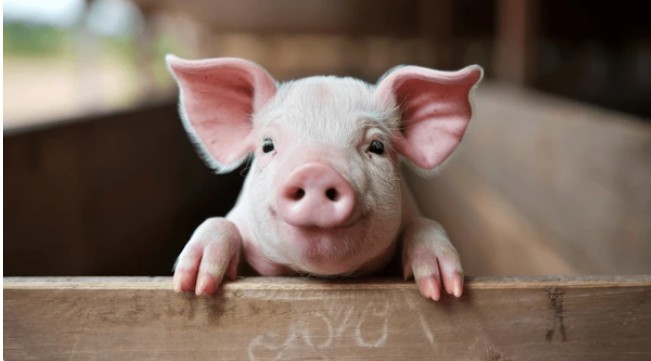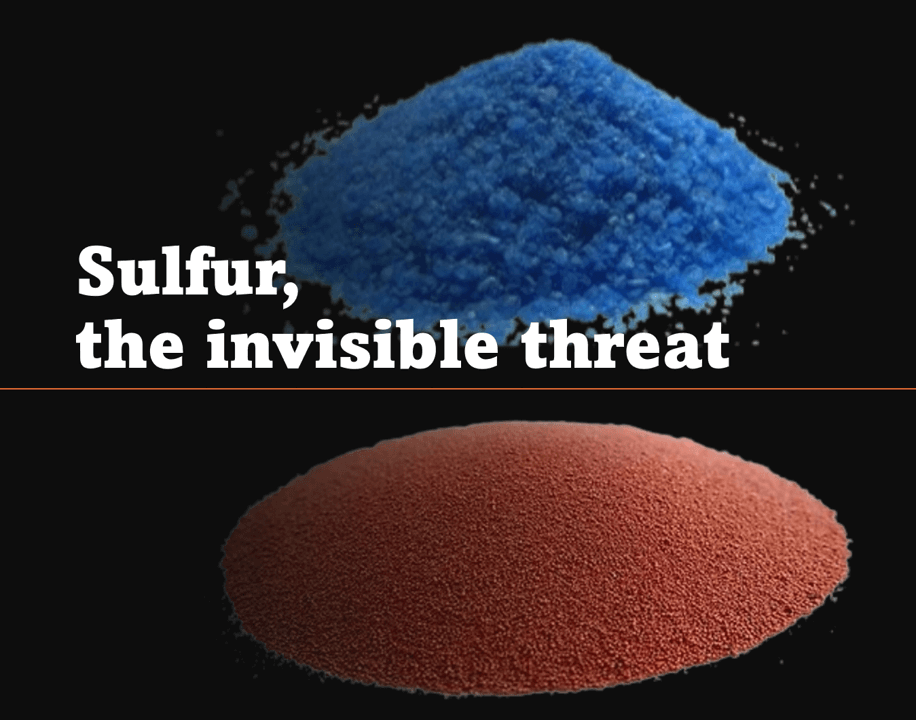News
Please stay connected with us. Each month, we publish a Nutricles, an article featuring industry trends, news updates, and sustainability insights related to the animal feed industry. We hope these articles provide you with valuable and relevant information.
The intestinal tract of monogastric animals is a living interface constantly renewing and protecting itself. Along its wall, specialized goblet cells secrete mucus that forms a thin protective film over the epithelium. This mucus layer lubricates the passage of digesta, shields the intestinal cells from mechanical friction and pathogens, and provides a habitat for beneficial bacteria. It acts as the gut’s first line of defense while allowing nutrients to diffuse through to the absorptive cells. But when it becomes excessive or overly viscous, mucus starts to interfere with normal digestive function. A thick mucus film creates a physical barrier between nutrients and the enterocytes, reducing the efficiency of absorption and increasing the apparent loss of amino acids and fat in the feces. It can also trap pathogenic bacteria and their toxins, allowing them to persist longer in the lumen instead of being cleared with the digesta. In young animals, excess mucus often leads to slower epithelial turnover, resulting in shorter villi and reduced digestive capacity. Another consequence is an increase in endogenous losses, because the animal must continuously produce and shed more mucus, which consumes energy and amino acids that would otherwise support growth. Over time, this creates a cycle where the gut remains protected but less functional, highlighting the importance of maintaining mucus at the right thickness rather than simply maximizing its production. Maintaining the right thickness of the mucus layer is therefore essential to keep protection without compromising absorption. This is where insoluble fibers play a strategic role by helping regulate mucus turnover through gentle mechanical stimulation. It is called scraping. Physical interaction between fibers and the intestinal wall Insoluble fibers, particularly those with coarse particle size and rigid structure, exert a gentle mechanical friction on the intestinal mucosa during peristalsis. This friction detaches portions of the superficial
When we talk about sustainability, meat production is often accused of being inefficient or resource intensive. Yet, recent work from Professor Paul Moughan at the Riddet Institute shows a different story. When we evaluate pork and poultry production through modern nutritional and environmental metrics, these species appear as some of the most effective protein converters in agriculture Efficient Protein Conversion The core of the argument is nutritional efficiency. Traditional systems such as PDCAAS (Protein Digestibility Corrected Amino Acid Score) have long underestimated the value of animal proteins. The more recent FAO endorsed DIAAS (Digestible Indispensable Amino Acid Score) method gives a clearer view by measuring the digestibility of each amino acid at the end of the small intestine. Using the pig as a model, DIAAS shows that pork, chicken, and eggs provide amino acids with a bioavailability much closer to human needs than cereals or legumes. In simple terms, pork and poultry transform feed into high quality amino acids with very little loss. Each kilogram of protein from these meats contributes more usable amino acids for human nutrition than plant protein. That efficiency becomes even more evident when we realize that most of the feed they consume, such as bran, brewers grains, meat meal, dried blood, or rice byproducts, are ingredients not used in human food. If we remove these noncompeting raw materials from the equation, the efficiency of swine and poultry production improves dramatically. These animals convert what humans cannot eat into highly digestible essential amino acids. The sector is also moving fast toward ingredients such as synthetic amino acids, microbial protein, or insect meal, further reducing the competition with human food chains. Environmental Footprint Animal production is often judged by land use or carbon emissions per kilogram of meat, but that approach misses the key point: not all
The challenge in Asia is that diets are heavily based on rice, corn and soybean meal, which provide too little insoluble fibre. As a result, diets are fibre-deficient and unbalanced. In Thailand and Vietnam, where corn–soy-based diets dominate, the total dietary fiber level is typically 2–3% crude fiber (CF) and 6–10% neutral detergent fiber (NDF). By the time digestible nutrients are absorbed in the small intestine, fiber becomes the dominant fraction in the distal gut, often more than 60% of the remaining dry matter. This means that, even if fiber represents a modest proportion of the diet at intake, it is the dominant fraction by the time digesta reaches the hindgut. Despite this central role, the use of fiber in monogastric nutrition remains poorly understood, and misconceptions continue to circulate. How fibers act in the gut The action of dietary fibers in pigs and poultry is first and foremost mechanical. Unlike starches and proteins that dissolve and disappear during digestion, fibers remain as solid particles in the intestinal contents. This solid phase exerts physical pressure against the intestinal wall, stimulating peristalsis, the rhythmic contractions that move digesta forward. Without fibers, the intestinal contents would be mostly liquid, and peristalsis would be severely impaired. Fibers also act as a scraping agent. They help to remove excess mucus and reduce bacterial adhesion on the intestinal lining, maintaining a cleaner mucosa and more efficient nutrient absorption. At the same time, fibers provide a substrate for the microbiota in the distal gut, encouraging fermentation and the production of beneficial metabolites such as butyrate, which supports colon health. One could imagine replacing fibers with other insoluble particles, like sand, to stimulate peristalsis. In theory, this would create some mechanical stimulation, but in practice sand is too fine and too abrasive, leading to tissue damage rather
You might not expect chickens or shrimp to be deep thinkers, but inside every cell they’re running a complex decision-making system based on methylation—deciding what genes to express, what fats to burn, and how to stay cool under pressure. It’s biochemistry’s version of high-speed multitasking, and it all depends on one key ingredient: methyl groups. Supporting this cycle with the right nutrients isn’t just smart nutrition—it’s giving your animals the tools to outthink their stress. The methylation cycle refers to a series of biochemical reactions where methyl groups, small carbon-based molecules (–CH₃), are transferred from one molecule to another. These reactions are fundamental to the functioning of animal cells. Liver Health and Lipid Metabolism Methylation is involved in synthesizing phosphatidylcholine, essential for fat transport. A deficiency in methyl donors can lead to fatty liver syndrome, especially in poultry and fish fed high-energy diets. Homocysteine Detoxification Homocysteine is a toxic by-product of methionine metabolism. If not remethylated back to methionine or converted to cysteine, it can accumulate and impair cardiovascular and neurological function. Efficient methylation keeps homocysteine levels in check. Synthesis of creatine and carnitine These two molecules are essential for muscle energy and fat metabolism. When methyl donors are insufficient, animals may struggle to maintain optimal muscle growth or efficiently mobilize energy from fat, leading to slower gains or poorer feed conversion. Embryonic development In breeding animals, methylation is central to reproductive success and embryonic development, with studies showing improved hatchability and litter performance when methyl donors are supplemented in maternal diets. Gut tight junctions Even the structure of the gut itself, villus height, crypt architecture, and epithelial integrity benefits from robust methylation. This is particularly important during early life stages or under stress conditions, where gut function is most vulnerable. Gene Regulation Methylation modifies DNA, turning genes “on” or
In animal nutrition, nothing is arbitrary, especially when it comes to trace minerals. Copper, for instance, is required at just 10 to 20 ppm in most swine and poultry diets, a remarkably small quantity compared to other essential nutrients. This raises a simple but important question: If nature sets the copper requirement so low, is there a reason for it, and could we increase the dosage without consequences? Over the past decades, nutritionists have demonstrated that increasing copper to pharmacological levels (150–250 ppm), particularly in growing piglets or broilers, has consistent benefits on performance. Short-term use improves average daily gain (ADG), feed conversion ratio (FCR), and gut health. However, when used over longer periods, during grower or finisher stages, this high copper inclusion can backfire. Performance gains may plateau or reverse, and the risk of toxicity increases, with evidence of liver accumulation, and tissue stress. What Is Redox Potential ? This paradox leads to a broader reflection: What if the redox potential of ingredient plays a role in their toxicity implications? Redox potential (or reduction potential) is a measure of how easily a substance can gain or lose electrons during a chemical reaction. It’s expressed in volts (V) and reflects the electron-transfer activity of an element. In biological systems, this property is crucial: many enzymes require trace minerals to accept or donate electrons as part of metabolic and detoxification processes. Each mineral has a characteristic redox potential, especially those that cycle between ionic states. Minerals with high redox potential will strongly attract electrons. Inside the cell, if unbound, these minerals can interact directly with DNA, proteins, lipids, and cell membranes, stealing electrons and denaturing their structure. This silent oxidative attack weakens the integrity of muscle cells, denatures proteins, and initiates lipid peroxidation. The consequences, though invisible during feeding, become apparent
In animal nutrition, particularly for monogastric species like swine and poultry, feed formulation goes far beyond meeting basic nutritional needs. One critical yet often underestimated factor influencing performance, gut health, and nutrient absorption is feed viscosity. This is especially relevant in Southeast Asia, where the widespread use of fibrous by-products such as rice bran, cassava and copra meal presents new challenges in formulation. As local feed ingredients and strategies evolve, understanding and managing viscosity becomes essential for every nutritionist seeking to improve efficiency and profitability. What is Feed Viscosity? Feed viscosity refers to the thickness or resistance to flow of the digesta in the gastrointestinal tract. When feed is mixed with digestive secretions, certain components, particularly soluble fibers, can form viscous gels. This gel-like environment slows down nutrient absorption, impairs enzyme activity, and creates favorable conditions for harmful microbial growth. But not all fibers behave the same way. Only soluble fibers increase viscosity because they dissolve in water and form molecular networks that bind water and thicken the intestinal contents. Common examples in the Southeast Asian context include pectins in cassava, arabinoxylans in rice bran, and mannans in copra meals. Both pigs and poultry are affected by viscous diets, but poultry are more sensitive due to their shorter gastrointestinal tract and faster transit time. In broilers, increased viscosity is directly linked to reduced nutrient absorption and wet litter problems. In piglets, the impact is milder but still significant, particularly in the post-weaning phase when the digestive system is immature. With growing use of non-traditional fiber sources in Asian piglet diets, attention to viscosity is more important than ever. What Causes Feed Viscosity? Viscosity mainly arises from soluble non-starch polysaccharides (NSPs) complex carbohydrates found in many plant-based feed ingredients. In Southeast Asia, key sources include: Arabinoxylans in rice bran and corn
In piglet nutrition, zinc oxide has long been a trusted ally. For decades, nutritionists have relied on it to fight post-weaning diarrhea, boost gut health, and help young pigs thrive through their most fragile weeks. Yet behind this familiar white, black or yellow powder lies a deeper truth: not all zinc oxide is created equal. While many feed formulators focus on the dosage, how many kilograms per ton, how many weeks in the program, the real story, and often the real problem, comes down to something less obvious: the physical and chemical nature of the zinc oxide itself. The analysis of multiple zinc oxide sources used across Asia and beyond has enabled to identify three distinct families of products, illustrated by different color and each behaving differently in the piglet’s digestive tract and each with its own consequences for antibacterial efficacy. Family One: White, Fast, and Short-Lived The first family of zinc oxide products is typically white in color and comes mostly from Asian sources. These products have small particle size, low density, but relatively high surface area. At first, they look like strong performers. The high surface area suggests plenty of material ready to interact with bacteria, giving a sharp antibacterial punch, on paper at least. But once these small, light particles hit the piglet’s stomach acid, they dissolve rapidly, sometimes too rapidly. The zinc ions release so quickly that by the time they meet bacteria, the antibacterial effect has already faded away. To compensate, nutritionists often increase the dosage, usually pushing up to 3 kilograms per ton of feed. But this raises serious concerns: Toxicity risks, especially if used for more than two weeks Reduction of feed intake as zinc taste is rejected by piglets Blocking actions of phytases Environmental burdens due to zinc excretion Regulatory red flags
Sulfur is an essential element in animal nutrition, present in many feed ingredients and additives. It is a key component of amino acids like methionine and cysteine and is necessary for protein synthesis and metabolic functions. However, excessive sulfur intake, whether from organic or inorganic sources, can cause significant toxicity issues in both swine and poultry. In animal feeding practices, several key contributors to sulfur intake consistently stand out: DDGS, lysine sulfate, copper sulfate and high-sulfur protein meals such as canola and soybean meals can increase the total sulfur load. Canola meal, soybean meal, and other protein-rich by-products contain significant amounts of organic sulfur, primarily in the form of sulfur-containing amino acids like methionine and cysteine. Canola meal, for instance, contains around 0.6-0.8% total sulfur. Although this sulfur is organic rather than inorganic sulfate, excessive inclusion of these meals can still increase the overall sulfur load in the diet. DDGS, a by-product of ethanol production, contains around 0.5-1% total sulfur, which includes both organic sulfur from protein content and inorganic sulfate. The sulfur content in DDGS primarily originates from the use of sulfuric acid during the ethanol production process to control pH and clean equipment. Due to its high protein and energy content, DDGS is commonly included at rates of 5-10% in animal diets contributing approximately 50 to 100 grams of sulfur per ton of feed. Lysine Sulfate Lysine sulfate, used as a cost-effective lysine source, contains 20-25% sulfate. In typical diets, lysine sulfate is included at 0.5-1%. Since sulfate itself contains about 33% sulfur, we can expect approximately 330-825 grams of sulfur per ton of feed, making lysine sulfate one of the main sources of sulfur, particularly in swine and poultry rations. Copper Sulfate Copper sulfate (CuSO₄·5H₂O) contains about 40% sulfate. When copper sulfate is used as a growth
